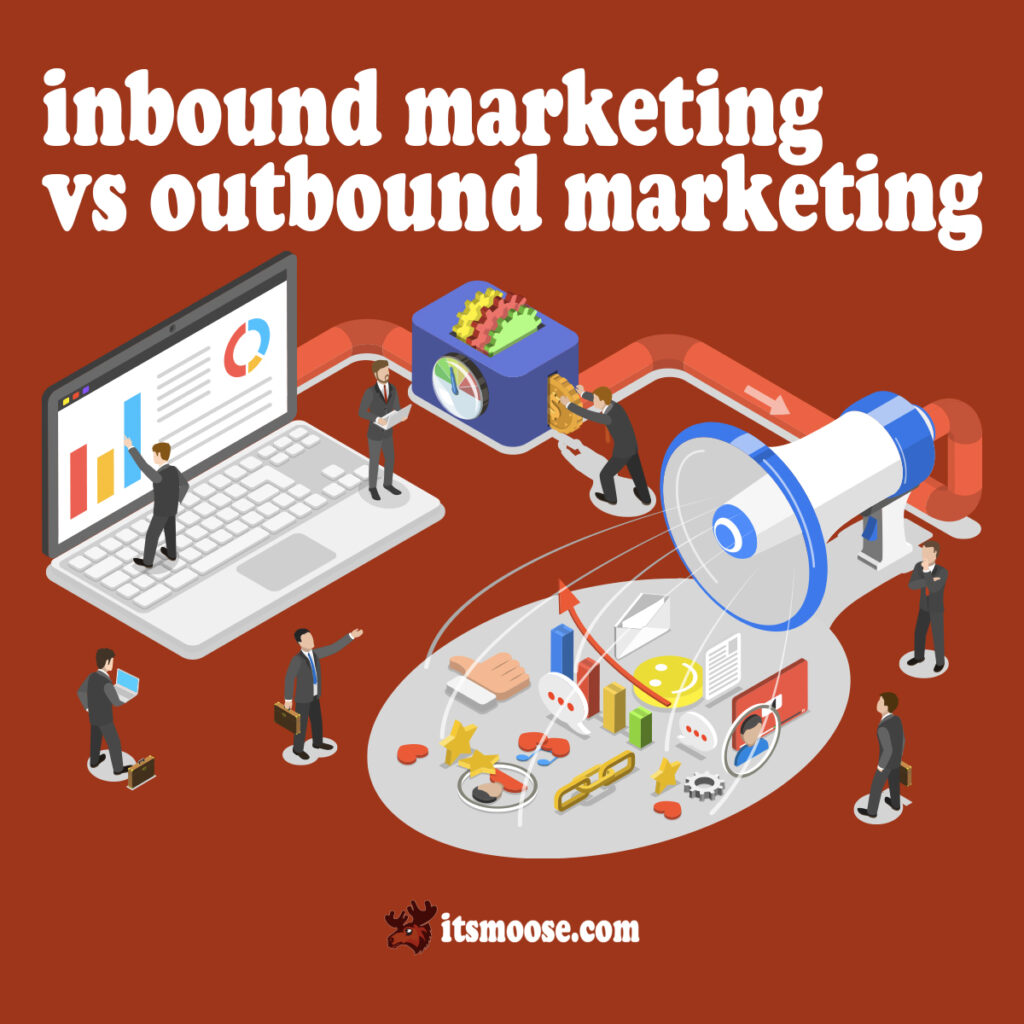Inbound Marketing vs Outbound Marketing: Understanding the Dynamic Duo of Marketing Strategies
In the ever-evolving landscape of marketing, businesses are constantly exploring innovative strategies to engage with their target audience effectively. The SuperBowl is a perfect example of this adaptation in marketing spanning decades in the U.S. Two prominent methodologies, inbound marketing and outbound marketing, stand at the forefront of this discussion. While both aim to achieve similar objectives—generating leads, increasing brand awareness, and driving conversions—their approaches differ significantly, catering to distinct consumer behaviors and preferences. In this comprehensive exploration, we delve into the nuances of inbound and outbound marketing, highlighting their disparities, significance, and the rationale behind incorporating both within the arsenal of a modern digital marketing agency.
Defining Inbound and Outbound Marketing
Let’s kick off by establishing clear definitions for both inbound and outbound marketing strategies.
Inbound Marketing: Inbound marketing revolves around drawing potential customers in by creating valuable content and experiences tailored to their needs and preferences. This approach aims to attract, engage, and delight prospects by providing relevant and helpful information through various channels such as blogs, social media, search engines, and email newsletters. Instead of interrupting consumers with unsolicited messages, inbound marketing seeks to establish a meaningful connection, fostering trust and loyalty over time.
Outbound Marketing: On the contrary, outbound marketing, also known as traditional or interruption marketing, involves pushing promotional messages out to a broad audience without necessarily considering their preferences or interests. Common outbound tactics include television and radio commercials, print advertisements, cold calling, and direct mail. Unlike inbound marketing, which focuses on earning the attention of prospects, outbound marketing relies on intrusive techniques to initiate contact and promote products or services.
What Are The Differences Between The Two?
Transitioning from traditional outbound marketing to the more contemporary inbound approach marks a significant shift in marketing paradigms. Here are some disparities between these two methodologies to gain a deeper understanding:
1. Engagement Style: Inbound marketing prioritizes fostering organic engagement by offering valuable content that resonates with the target audience. Consumers actively seek out information relevant to their needs, resulting in a more receptive and engaged audience. On the other hand, outbound marketing relies on interruptive tactics, often bombarding consumers with messages they may not necessarily be interested in, leading to a higher likelihood of resistance or disengagement.
2. Targeting: Inbound marketing emphasizes targeting specific demographics or personas based on their interests, behaviors, and online activities. By tailoring content to address the pain points and preferences of these segments, businesses can attract qualified leads more effectively. In contrast, outbound marketing tends to cast a wider net, reaching a broader audience without necessarily honing in on individual preferences or characteristics.
3. Relationship Building: At its core, inbound marketing is centered around building long-term relationships with customers through consistent engagement and personalized experiences. By delivering valuable content at every stage of the buyer’s journey, businesses can nurture leads and cultivate brand loyalty over time. Outbound marketing, however, often prioritizes short-term gains, focusing on immediate conversions rather than nurturing enduring relationships with customers.
4. Measurement and Analytics: Inbound marketing offers robust measurement and analytics capabilities, allowing businesses to track the performance of their campaigns in real-time. From website traffic and conversion rates to social media engagement and email open rates, inbound marketers have access to a wealth of data to optimize their strategies continuously. Conversely, outbound marketing metrics may be more challenging to quantify accurately, relying heavily on indirect indicators such as impressions or reach.
The Significance of Inbound Marketing
These days consumers have grown increasingly adept at tuning out traditional advertising. Inbound marketing emerges as a powerful antidote to consumer apathy. By providing valuable and relevant content that resonates with their audience, businesses can establish themselves as thought leaders within their respective industries, earning the trust and loyalty of customers in the process. According to a study by HubSpot, companies that prioritize inbound marketing experience a 55% increase in lead generation compared to those that rely solely on outbound tactics. Moreover, inbound marketing tends to offer a higher return on investment (ROI) over time, as the content continues to attract and engage prospects long after its initial creation.
The Role of Outbound Marketing
While inbound marketing has gained prominence in recent years, the role of outbound marketing should not be underestimated. Traditional outbound tactics still hold relevance in certain contexts, particularly for reaching audiences that may not be actively searching for products or services online. For instance, television and radio commercials can help businesses capture the attention of a broad audience and build brand awareness on a massive scale. Additionally, outbound marketing can complement inbound efforts by driving traffic to relevant landing pages or social media channels, thereby amplifying the reach and impact of a comprehensive marketing strategy.
The Case for Offering Both Types of Marketing
Marketing agencies must recognize the value of offering a diverse range of strategies to cater to the unique needs and preferences of their clients. While inbound marketing serves as a cornerstone for building sustainable, long-term relationships with customers, outbound tactics can provide an immediate boost in visibility and brand recognition. By integrating both approaches within their service offerings, marketing agencies can deliver comprehensive solutions that maximize the reach and effectiveness of their clients’ campaigns. Whether it’s crafting compelling content for inbound lead generation or designing eye-catching advertisements for outbound promotion, a balanced approach that leverages the strengths of both methodologies is essential for driving tangible results in today’s world of commerce.
Why Choose ItsMoose.com For Your Marketing Solutions?
Amidst the multiple marketing agencies vying for your business, ItsMoose.com is the ideal partner for local business growth in the Corpus Christi, Texas area. With a proven track record of delivering innovative marketing solutions tailored to the unique needs of each client, ItsMoose.com combines the best of inbound and outbound strategies to drive meaningful results. From content creation and social media management to targeted advertising campaigns and lead generation initiatives, ItsMoose.com offers a comprehensive suite of services designed to help businesses thrive in today’s competitive landscape. With a team of experienced professionals and a commitment to excellence, ItsMoose.com is ready to elevate your brand and accelerate your growth journey.




